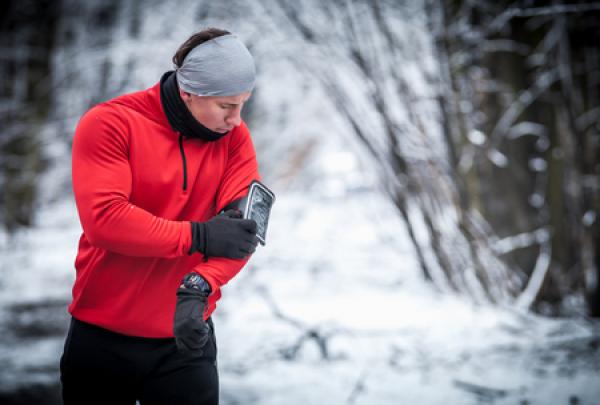
While extremely hot and cold temperatures aren’t particularly a barrier to entry when it comes to sport and physical activity, extreme conditions can trigger negative consequences if the participant isn’t diligent and prepared.
If physiological homeostasis and internal body temperature cannot be maintained, whether in a hot or cold environment, conditional injuries, side effects, and diminished performance are the likely result.
Since it’s important to try to maintain physical activity throughout the year, it’s critical for any athlete to be aware of the conditions in which they perform. An athlete must be prepared for performing in less than ideal conditions.
The following will be a discussion of the potential harm that the environment can have on the physical well-being of an athlete. Moreover, we’ll discuss preventative measures that must be taken in order to remain healthy, active, and injury-free, no matter the weather conditions.
Outlook on Exercise in Extreme Conditions
Exercising in extreme conditions, whether hot or cold, places added stress on the body. Without implementing preventative measures to combat such stress, the risk of injury increases dramatically.
When exercising in extreme cold, the body transports its blood supply to the skin and away from the muscles in order to maintain internal temperatures. As a result, the heart rate increases, and less oxygen is delivered to the muscles, which leads to an increased risk of muscular injury. In addition, the athlete’s level of hydration decreases, and muscle cramping can easily result.
On the contrary, when exercising in extreme heat, perspiration levels are affected. As a result, the internal body temperature rises, and the athlete is at higher risk of heat-related conditions like heat stroke.
A lack of understanding of the effects of extreme changes in the environment on the body can cause the athlete that has not prepared to be at risk of severe injury.
The following are several of the most common potential outcomes of unsafe exercise in extreme conditions, both hot and cold:
- Heat Exhaustion
- Heat Stroke
- Hypothermia & Frostbite
- Muscle Cramps
- Muscle Strain
- Tears and Ruptures
The majority of the outcomes mentioned above typically come with warning signs in the form of symptoms. Upon the occurrence of symptoms, the athlete should halt activity and rest and subsequently seek immediate medical attention.
Symptoms of Extreme Temperature-Related Conditions
Ignoring signs and symptoms of a heat-related or cold-related injury or illness is a bad decision by the athlete. By avoiding these warning signs, symptoms could worsen, ultimately resulting in a severe injury with potential long-term damage.
The following are the most common symptoms associated with exercising in extremely hot conditions:
- Dizziness & Nausea
- Headache
- Extreme Thirst
- Abnormally Elevated Heart Rate
- Trouble Breathing
The following are the most common symptoms associated with exercising in extremely cold conditions:
- Loss of Mobility
- Thirst
- Tightness, Stiffness, & Soreness
- Trouble Breathing
- Intense Shivering
- Loss of Sensation/Numbness
- May Trigger Symptoms of Asthma or other Related Conditions
Upon the identification of any or all of these symptoms, stop exercise immediately, seek hydration, and aim to bring your core body temperature back to homeostasis. Next, it’s important to closely monitor your breathing and heart rate, seek help, and involve a medical professional.
Prevention of Heat and Cold Injuries
Luckily, there are several strategies that can be implemented and executed in order to prevent heat or cold injuries from occurring. Not only will the following preventative measures reduce your risk of injury, but they are also good to maintain your overall health.
The following are the most effective preventative measures to combat extreme conditions:
- Understand Your Tolerance to Hot and Cold
- Acclimate Yourself to Such Conditions
- Be Humble Towards Your Fitness Level (Don’t Exert Yourself)
- Maintain Adequate Hydration
- Dress Appropriately and Be Prepared to Add or Eliminate Layers
- Stretch, Warm-Up, and Cool Down
- Improve Aerobic Capacity
Heat-related and cold-related injuries and illnesses can be prevented with careful planning and preparation. For example, wearing light reflective clothing when it is very hot outside can be helpful. The athlete should make every attempt to control what they are able to control.
Exercise shouldn’t have to be put on pause because of an external factor like the weather. Instead, athletes need to learn how to make the necessary adjustments to maintain safety, prevent injury, and allow for optimum performance.
Final Thoughts
Extreme conditions, such as heat or cold, can trigger negative consequences for the unprepared athlete. So, it’s best that all athletes gain an understanding of the potential risks of such conditions.
Implementing appropriate preventative measures will reduce the risk of injury and allow continued participation in sporting activity.
The good news is that exercise can be performed safely under extreme hot or cold, but athletes must learn to adapt to these conditions appropriately.